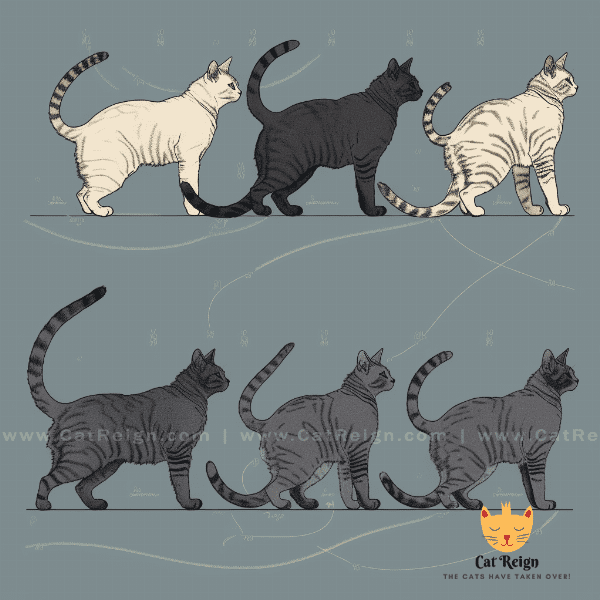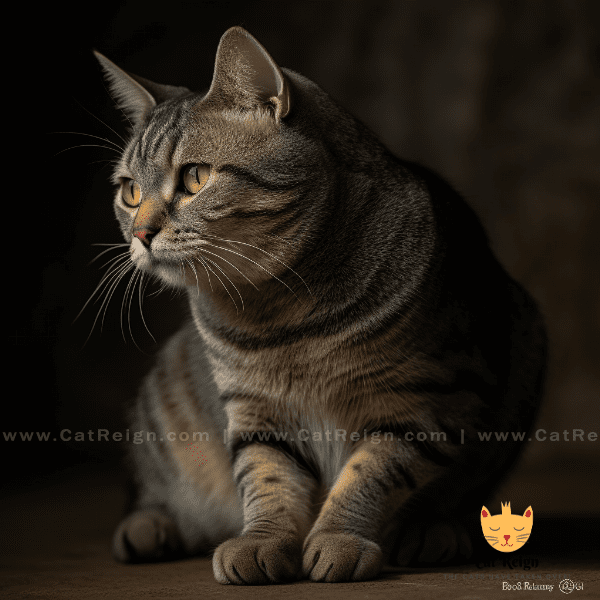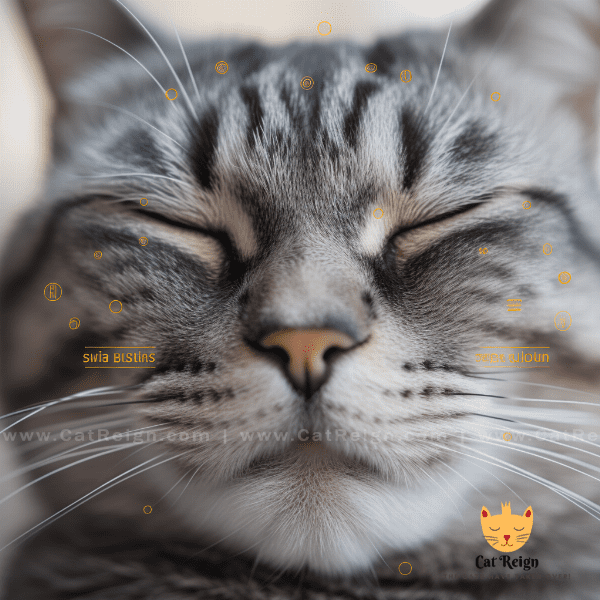Table of Contents
- Understanding the Basics of Cat Body Language
- Common Signs of Nervousness in Cats
- The Importance of Context in Interpreting Cat Body Language
- How to Approach a Nervous Cat
- Tips for Calming a Nervous Cat
- What Not to Do When a Cat is Nervous
- Reading Facial Expressions in Cats
- Interpreting Tail Movements in Cats
- Recognizing Vocalizations of a Nervous Cat
- Putting It All Together: Deciphering Your Cat’s Body Language
Understanding the Basics of Cat Body Language
Cats have a complex language of their own that can be quite challenging to understand. However, by learning the basics of Cat body language, you can better understand your feline friend’s mood, emotions, and intentions. Here are some key points to keep in mind:
Body Position and Movement
Cats use their bodies to communicate a range of emotions and intentions. For example, when a cat is relaxed and comfortable, it will typically lie down with its paws tucked underneath its body or stretch out on its side. On the other hand, a cat that feels threatened or scared may crouch down low to the ground with its tail tucked between its legs. Similarly, a cat that is feeling aggressive may puff up its fur, arch its back, and hiss or growl.
Eye Contact
Eye contact is another essential aspect of cat body language. A cat that feels comfortable and relaxed may make eye contact with you and slowly blink its eyes. This is often considered a sign of affection in the feline world. However, a cat that is feeling anxious or scared may avoid eye contact altogether or stare intensely at an object or person.
Facial Expressions
Like humans, cats use their facial expressions to communicate their emotions. A relaxed cat will typically have its ears forward and slightly tilted, and its mouth will be slightly open. Conversely, a cat that is feeling anxious or aggressive may have its ears pinned back against its head, its pupils dilated, and its mouth pulled back into a snarl.
Tail Movement
Cats also use their tails to communicate a range of emotions. A tail that is held high and straight up in the air typically signals happiness and confidence, while a tail that is tucked tightly between the legs is a sign of fear or anxiety. Cats may also flick their tails back and forth rapidly when they are feeling agitated or annoyed.
Understanding the basics of cat body language is an essential first step in building a strong relationship with your feline friend. By paying attention to your cat’s body position, eye contact, facial expressions, and tail movement, you can begin to decipher what your cat is trying to communicate.

Common Signs of Nervousness in Cats
Cats can be anxious or nervous for a variety of reasons, such as changes in their environment or routine, exposure to new people or animals, or illness. It’s essential to recognize the signs of nervousness in cats so that you can take steps to alleviate their stress and make them feel more comfortable. Here are some common signs to look out for:
Body Language
Cats that are feeling nervous or anxious may exhibit specific body language cues. They may crouch low to the ground, with their tail tucked between their legs, or they may try to make themselves smaller by curling up tightly. They may also keep their ears pinned back against their head or flatten them against their skull. Additionally, a nervous cat may avoid eye contact or stare intensely at an object or person.
Vocalizations
Cats that are feeling stressed may also make specific vocalizations. They may meow more frequently than usual, or they may growl, hiss, or spit in response to perceived threats. Some cats may also yowl or cry excessively, particularly if they are experiencing separation anxiety.
Changes in Behavior
Changes in behavior can also be a sign of nervousness in cats. A once-friendly cat may become more reclusive or hide in unusual places. They may also become more aggressive or bite and scratch in response to perceived threats. Additionally, some cats may exhibit obsessive-compulsive behaviors, such as excessive grooming or paw licking.
Physical Symptoms
Finally, nervousness in cats can also manifest as physical symptoms. They may experience digestive issues, such as vomiting or diarrhea, or they may develop skin irritations or hair loss due to excessive grooming. Some cats may also develop urinary tract infections or other health issues due to stress.
By recognizing the common signs of nervousness in cats, you can take steps to alleviate their stress and make them feel more comfortable. Providing a safe and secure environment, plenty of affection and attention, and regular playtime can all help to reduce a cat’s anxiety and promote their overall well-being.

The Importance of Context in Interpreting Cat Body Language
Interpreting cat body language is not always a straightforward task. It’s essential to consider the context in which a cat is exhibiting certain behaviors to fully understand what they are trying to communicate. Here are some important points to keep in mind:
Environmental Factors
The environment in which a cat is situated can significantly impact their body language. For example, a cat that is feeling nervous or anxious in an unfamiliar environment may exhibit different body language cues than a cat that is feeling comfortable and secure in their home. Additionally, the presence of other people or animals in the environment can also affect a cat’s behavior.
Individual Personality
Cats, like people, have their own unique personalities and quirks. What one cat may consider a threat, another may find comforting. It’s important to understand your individual cat’s personality and body language cues to better interpret their behavior accurately.
Previous Experience
Previous experiences can also impact a cat’s body language. For example, a cat that has experienced trauma or abuse may exhibit certain body language cues, such as cowering or avoidance, more frequently than a cat that has not had similar experiences. It’s essential to take a cat’s past experiences into account when interpreting their body language.
Physical Health
Finally, a cat’s physical health can also impact their body language. For example, a cat that is in pain may exhibit different body language cues than a cat that is feeling well. It’s important to rule out any potential medical issues before interpreting a cat’s behavior as purely emotional or psychological.
In conclusion, interpreting cat body language is a complex task that requires careful consideration of various contextual factors. By taking into account environmental factors, individual personality, previous experiences, and physical health, you can better understand what your cat is trying to communicate and respond appropriately to their needs.

How to Approach a Nervous Cat
Give Them Space
The first step in approaching a nervous cat is to give them space. Cats that are feeling anxious or scared may need time to calm down before they feel comfortable being approached. It’s important to allow a nervous cat to approach you on their terms and to avoid forcing contact.
Speak Softly and Move Slowly
When approaching a nervous cat, it’s essential to speak softly and move slowly. Sudden movements or loud noises can startle a cat and increase their anxiety. Instead, speak in a calm, soothing voice and move slowly and deliberately to avoid startling the cat.
Offer Treats or Toys
Offering treats or toys can be an effective way to help a nervous cat feel more comfortable around you. Cats love treats, and offering them can help to build positive associations with your presence. Similarly, playing with a cat using their favorite toys can be an effective way to build trust and alleviate anxiety.
Use Positive Reinforcement
Positive reinforcement can also be an effective way to help a nervous cat feel more comfortable around you. For example, rewarding a cat with treats or praise when they approach you or display calm behavior can help to reinforce positive associations and build trust.
Avoid Direct Eye Contact
Direct eye contact can be perceived as a threat by a nervous cat. It’s essential to avoid staring directly into a cat’s eyes, as this can increase their anxiety and make them feel threatened. Instead, allow the cat to approach you on their terms, and avoid making direct eye contact until they are comfortable with your presence.
In conclusion, approaching a nervous cat requires patience, care, and an understanding of cat behavior. By giving them space, speaking softly and moving slowly, offering treats or toys, using positive reinforcement, and avoiding direct eye contact, you can help to build trust and alleviate anxiety in a nervous cat.
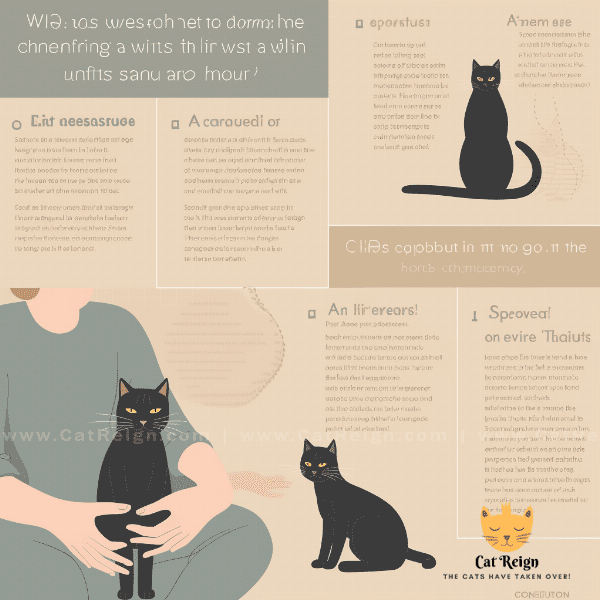
Tips for Calming a Nervous Cat
Calming a nervous cat requires patience and an understanding of cat behavior. Here are some tips to help calm a nervous cat:
Provide a Safe and Secure Environment
Providing a safe and secure environment is essential for calming a nervous cat. Cats thrive in predictable and stable environments, so it’s essential to create a consistent routine and provide a secure space for them to retreat to when they feel anxious.
Create a Comfortable Space
Creating a comfortable space for a nervous cat can also help to alleviate their anxiety. Provide a cozy bed or hideaway space for the cat to retreat to when they feel overwhelmed. Additionally, providing soft blankets or bedding can help the cat feel more comfortable and secure.
Use Calming Scents
Certain scents, such as lavender or chamomile, can have a calming effect on cats. Spraying these scents in the cat’s environment or using essential oil diffusers can help to promote relaxation and calmness.
Provide Playtime and Exercise
Regular playtime and exercise can help to reduce a cat’s anxiety and promote relaxation. Playtime can help to redirect a cat’s energy and provide an outlet for their natural instincts, which can help to alleviate stress.
Consider Natural Remedies
Natural remedies, such as herbal supplements or pheromone diffusers, can also be effective in calming nervous cats. These remedies work by promoting relaxation and reducing anxiety, helping cats feel more comfortable and secure.
In conclusion, calming a nervous cat requires patience and an understanding of their behavior. By providing a safe and secure environment, creating a comfortable space, using calming scents, providing playtime and exercise, and considering natural remedies, you can help to promote relaxation and calmness in a nervous cat.
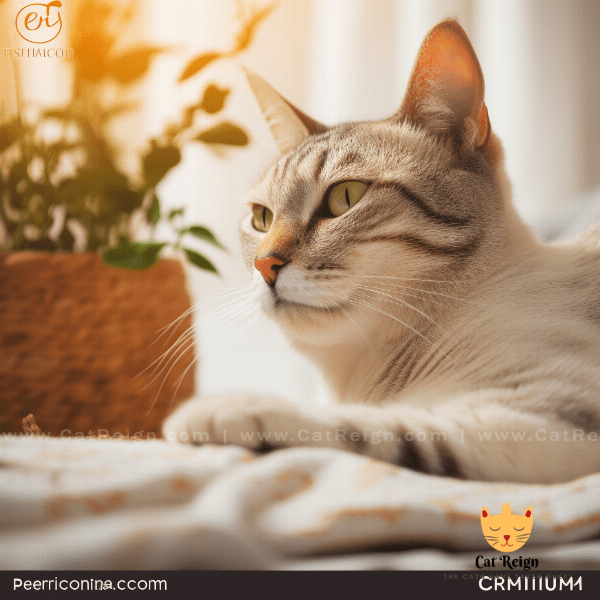
What Not to Do When a Cat is Nervous
When a cat is feeling nervous or anxious, it’s essential to take care not to exacerbate their stress. Here are some things to avoid when a cat is nervous:
Don’t Force Contact
Forcing contact with a nervous cat can increase their anxiety and make them feel threatened. It’s important to allow the cat to approach you on their terms and to avoid forcing physical contact.
Don’t Yell or Make Loud Noises
Loud noises or yelling can startle a nervous cat and increase their anxiety. It’s important to speak softly and move quietly to avoid startling the cat.
Don’t Make Sudden Movements
Sudden movements can also startle a nervous cat and make them feel threatened. It’s important to move slowly and deliberately around a nervous cat to avoid exacerbating their anxiety.
Don’t Punish or Scold
Punishing or scolding a nervous cat can make their anxiety worse and damage your relationship with them. It’s important to be patient and understanding with a nervous cat and to avoid punishing or scolding them for exhibiting anxious behavior.
Don’t Ignore Their Behavior
Ignoring a cat’s anxious behavior can make their anxiety worse and damage your relationship with them. It’s important to pay attention to a nervous cat’s behavior and to take steps to alleviate their stress.
In conclusion, when a cat is feeling nervous or anxious, it’s essential to take care not to exacerbate their stress. By avoiding forcing contact, yelling or making loud noises, making sudden movements, punishing or scolding, and ignoring their behavior, you can help to reduce a cat’s anxiety and promote their overall well-being.
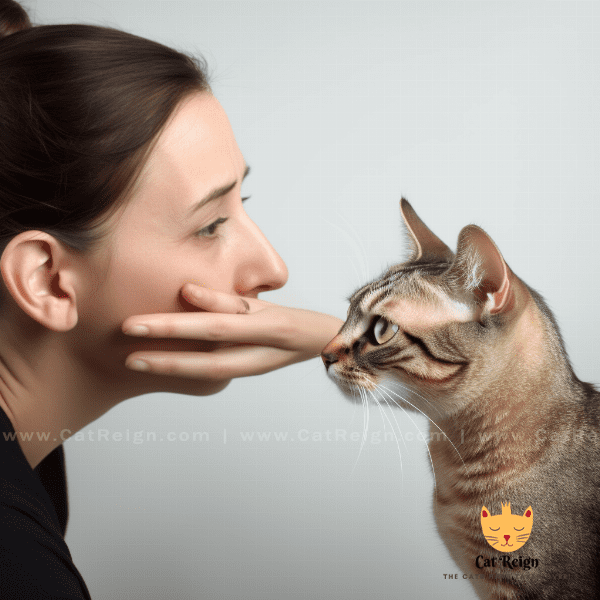
Reading Facial Expressions in Cats
Ears
A cat’s ears can communicate a range of emotions. When a cat’s ears are forward and slightly tilted, it often indicates that they are relaxed and content. Conversely, when a cat’s ears are pinned back against their head, it’s a sign that they are feeling anxious or scared.
Eyes
A cat’s eyes can also communicate a range of emotions. When a cat’s pupils are dilated, it often indicates that they are feeling threatened or anxious. Additionally, cats may blink slowly or half-close their eyes when they are feeling relaxed and comfortable.
Mouth and Whiskers
A cat’s mouth and whiskers can also provide clues about their emotions. When a cat’s mouth is relaxed and slightly open, it often indicates that they are feeling comfortable and content. Conversely, when a cat’s mouth is pulled back into a snarl, it’s a sign that they are feeling threatened or aggressive. Additionally, a cat’s whiskers may be pulled back against their face when they are feeling anxious or scared.
Overall Facial Expression
Finally, it’s essential to consider a cat’s overall facial expression when interpreting their emotions. A relaxed cat will typically have a soft, open expression, while a nervous or anxious cat may have a tense or closed expression. Additionally, a cat’s facial expression can change quickly, so it’s important to pay attention to their body language cues as well.
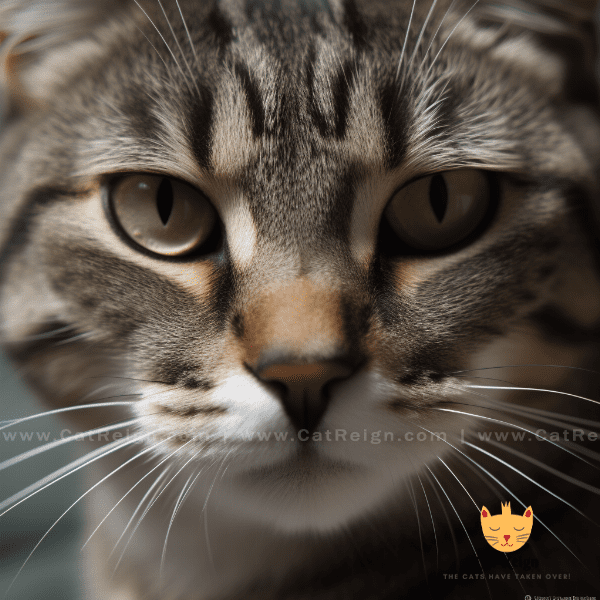
Interpreting Tail Movements in Cats
A cat’s tail is a vital part of their body language, and understanding the different tail movements can help you better understand your feline friend’s emotions and intentions. Here are some important tail movements to look out for:
Straight Up
When a cat’s tail is straight up, it often indicates that they are feeling confident and comfortable in their environment. This is a common tail position for cats that are relaxed and content.
Puffed Up
A puffed-up tail is a sign that a cat is feeling threatened or scared. When a cat’s tail is puffed up, it makes them appear larger and more intimidating to potential predators or threats.
Tucked Between Legs
When a cat’s tail is tucked between their legs, it’s a sign that they are feeling anxious or scared. This is a common tail position for cats that are feeling threatened or overwhelmed.
Twitching
A twitching tail is a sign that a cat is feeling agitated or annoyed. This is often seen when a cat is about to pounce or is irritated by something in their environment.
Wagging
When a cat’s tail is wagging, it can indicate a range of emotions depending on the speed and intensity of the wag. A slow, relaxed wag often indicates that a cat is feeling happy and content, while a fast, agitated wag can indicate that a cat is feeling threatened or aggressive.
In conclusion, interpreting tail movements in cats is an essential aspect of understanding their body language. By paying attention to a cat’s tail position, whether it’s straight up, puffed up, tucked between legs, twitching, or wagging, you can gain insight into their emotions and intentions. This can help you better communicate with your feline friend and build a strong, trusting relationship with them.

Recognizing Vocalizations of a Nervous Cat
Cats can communicate a range of emotions through vocalizations, and recognizing these vocalizations can help you better understand your cat’s emotional state. Here are some common vocalizations of a nervous cat:
Hissing
Hissing is a common vocalization of a nervous or threatened cat. When a cat hisses, it’s a sign that they are feeling scared or defensive and may be preparing to attack or defend themselves.
Growling
Growling is another vocalization that a nervous cat may make. Growling often indicates that a cat is feeling threatened or scared and is preparing to defend themselves.
Meowing
While meowing is typically associated with a cat seeking attention or food, it can also be a sign of nervousness or anxiety. When a cat meows excessively, it may be a sign that they are feeling stressed or overwhelmed.
Yowling
Yowling is a more intense and prolonged version of meowing and is often associated with a cat that is feeling anxious or distressed. Yowling can be a sign of a range of emotional states, including fear, frustration, or loneliness.
Purring
While purring is often associated with a happy and content cat, it can also be a sign of nervousness or anxiety. When a cat is feeling stressed or anxious, they may purr as a self-soothing mechanism to alleviate their anxiety.
In conclusion, recognizing vocalizations of a nervous cat is an essential aspect of understanding their emotional state. By paying attention to their hissing, growling, meowing, yowling, or purring, you can gain insight into their emotions and intentions. This can help you better communicate with your feline friend and provide the support they need to feel calm and comfortable.
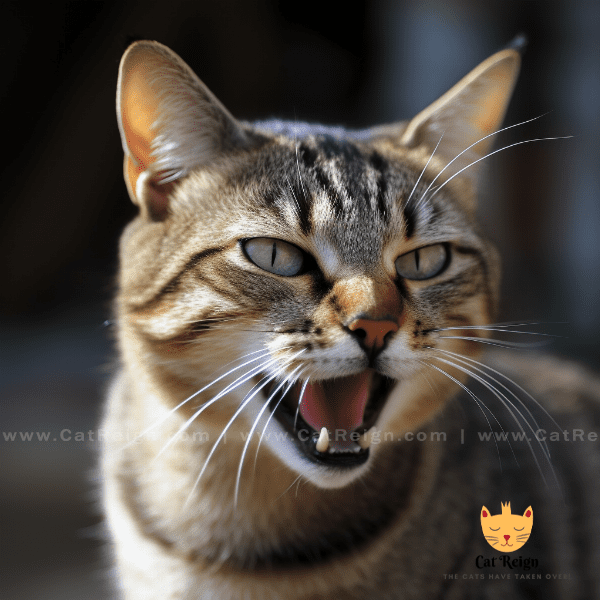
Putting It All Together: Deciphering Your Cat’s Body Language
Deciphering your cat’s body language can take time and practice, but it’s an essential aspect of building a strong, trusting relationship with your feline friend. Here are some tips for putting it all together:
Pay Attention to Context
When interpreting your cat’s body language, it’s essential to pay attention to the context of the situation. A cat’s body language can vary depending on their environment and the people or animals around them. Consider factors such as the time of day, the presence of other pets or people, and recent changes in their environment.
Look at the Big Picture
When interpreting your cat’s body language, it’s important to consider their overall body language cues, not just one specific behavior. Look at their facial expression, tail position, and vocalizations to get a complete picture of their emotional state.
Consider Their Personality
Cats have individual personalities, and their body language can vary depending on their temperament. Consider your cat’s unique personality when interpreting their body language cues. For example, a shy cat may exhibit more anxious behaviors than a confident and outgoing cat.
Don’t Make Assumptions
It’s essential to avoid making assumptions about your cat’s body language. What may appear to be a sign of aggression or anxiety may be something entirely different. Take the time to observe your cat’s body language cues and learn what they mean in various contexts.
Be Patient
Deciphering your cat’s body language takes time and patience. It’s essential to take the time to observe and understand your cat’s behaviors, and to be patient as you learn how to interpret their body language cues.
In conclusion, deciphering your cat’s body language is an essential aspect of building a strong, trusting relationship with your feline friend. By paying attention to context, looking at the big picture, considering their personality, avoiding assumptions, and being patient, you can learn to interpret your cat’s body language cues and communicate effectively with them.


